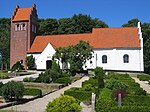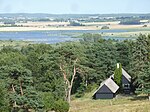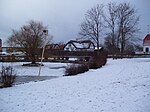Tisvildeleje
Capital Region of Denmark stubsGeography of DenmarkSeaside resorts in Denmark

Tisvildeleje is a village and the coastal part of the town Tisvilde, located on the north coast of the island of Zealand (Sjælland) in Denmark, 60 km/40miles north of Copenhagen in Region Hovedstaden. To the west, Tisvildeleje is bordered by the protected plantation of Tisvilde Hegn ("Tisvilde Fence"), which is Denmark's fifth largest forest. The beaches of Tisvildeleje are known for their white sands and soft dunes. The beach uses large boulders as rock armour and groynes for sea defense in most places. A sea wall also protects a stretch of the coast.
Excerpt from the Wikipedia article Tisvildeleje (License: CC BY-SA 3.0, Authors, Images).Tisvildeleje
Hovedgaden, Gribskov Municipality
Geographical coordinates (GPS) Address Nearby Places Show on map
Geographical coordinates (GPS)
| Latitude | Longitude |
|---|---|
| N 56.059166666667 ° | E 12.074444444444 ° |
Address
Hovedgaden
3220 Gribskov Municipality
Capital Region of Denmark, Denmark
Open on Google Maps









